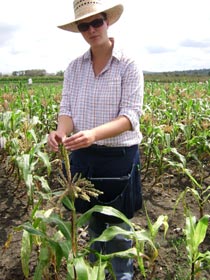Kenya: Seed companies see maize hybrids
By Michael Arunga/CIMMYT
Informative presentations, lively discussions and a research station field trip were highlights of a Water Efficient Maize for Africa (WEMA) course on maize seed production and management held last week in Nairobi.
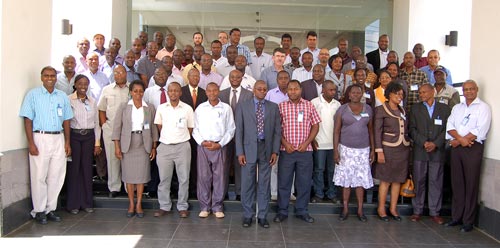
The two-day course targeted seed companies that will commercialize drought-tolerant maize hybrids from the WEMA project. Seed company representatives were accompanied by the WEMA Product Deployment Team (DEPT) and members of WEMA partner countries (Kenya, Mozambique, South Africa, Tanzania and Uganda). Representatives from CIMMYT, Monsanto, the African Agricultural Technology Foundation (AATF), the African Seed Trade Association (AFSTA) and a member of the National Agricultural Research Organisation Board of Trustees attended.
The African Agricultural Technology Foundation (AATF)-led WEMA DEPT team and CIMMYT organized the course. During the plenary session, seed experts – including John MacRobert and Mosisa Regassa from CIMMYT and Jonga Munyaradzi from AATF – presented on hybrid seed production, distinguishing characteristics of inbred lines, certification standards and inspection procedures, quality assurance procedures and stewardship. William Munyao, an inspector at the Kenya Plant Health Inspectorate Service, explained why standards and inspection are crucial to achieve credibility.
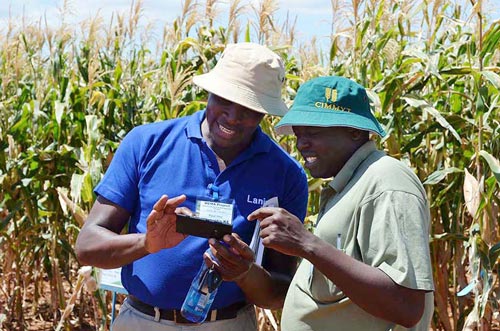
Participants raised concerns about the slow implementation of maize seed regulatory standards by regional bodies such as the Economic Community of West Africa States, the East Africa Community and the Common Market for Eastern and Southern Africa. Seed companies said they want to see these standards implemented as soon as possible because they will give farmers greater access to improved varieties. After the plenary session, CIMMYT hosted participants on a visit to the KARI-CIMMYT Kiboko Crops Research Station. Stephen Mugo, Yoseph Beyene and Kiru Pillay led the tour, during which participants had the opportunity to evaluate selected hybrids and lines from demonstration plots. More than 50 hybrids are being grown under managed drought stress and optimal conditions.
The hybrids are in their first or second year of national performance trials in Kenya, Mozambique, South Africa, Tanzania and Uganda. The participants also visited the recently-developed doubled haploid (DH) lines in a seed increase nursery. Sotero Bumagat, the CIMMYT DH manager, led participants on a tour of the newly-commissioned DH facility. James Karanja and Regina Tende presented insect-protected confined field trials. MacRobert, a CIMMYT expert in seed production and management, told participants to embrace realistic approaches when producing seed. He emphasized the importance of hiring skilled personnel who have a genuine interest in seed production. “Emphasis should not be entirely on academia,” MacRobert said. “We should not insist on diploma, undergraduate, master’s or even doctorate degrees as prerequisites for hiring a productive worker. A farm hand who does not have these qualifications but has excellent seed production experience may be an excellent employee.”
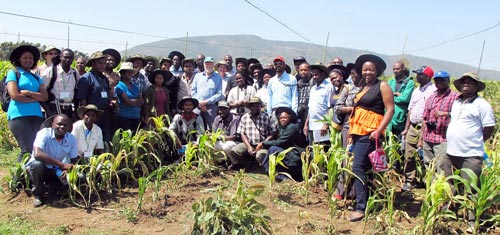
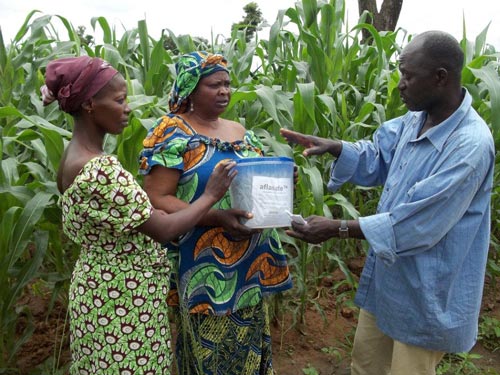 “All the maize for my home consumption comes from my aflasafe™-treated field,” says farmer Alhaji Al-Hassan from Nigeria’s Kaduna State. “When I take my maize to the market, buyers rush for it because the quality looks better. The grains look clean.”
“All the maize for my home consumption comes from my aflasafe™-treated field,” says farmer Alhaji Al-Hassan from Nigeria’s Kaduna State. “When I take my maize to the market, buyers rush for it because the quality looks better. The grains look clean.”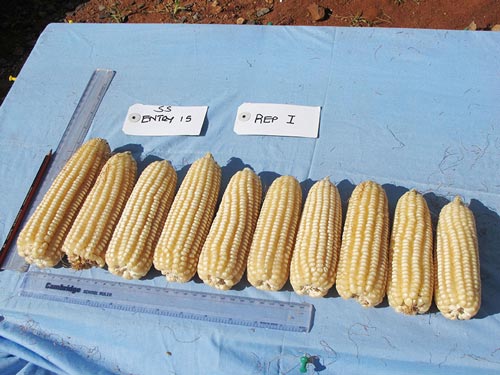 The fourth confined field trial of MON87460, a genetically modified maize variety developed to tolerate moderate drought, recently concluded at the Kenya Agricultural Research Institute (
The fourth confined field trial of MON87460, a genetically modified maize variety developed to tolerate moderate drought, recently concluded at the Kenya Agricultural Research Institute (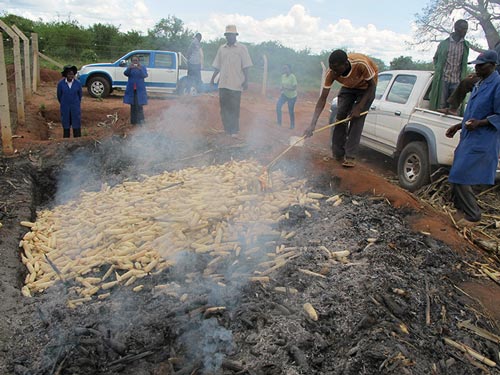
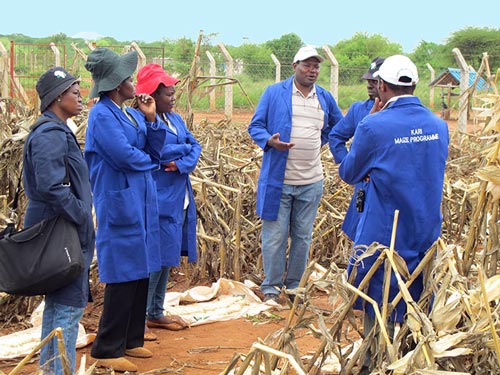 Eveline Shitabule, an inspector with KEPHIS, noted that training helped the participants to understand and follow instructions to ensure compliance. Having competent and well-trained personnel is one of the three pillars of compliance, the other two being a secure facility and records that are accessible and understandable.
Eveline Shitabule, an inspector with KEPHIS, noted that training helped the participants to understand and follow instructions to ensure compliance. Having competent and well-trained personnel is one of the three pillars of compliance, the other two being a secure facility and records that are accessible and understandable.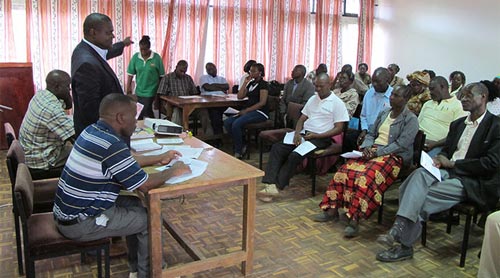 On 02 May 2013, the Water Efficient Maize for Africa (
On 02 May 2013, the Water Efficient Maize for Africa (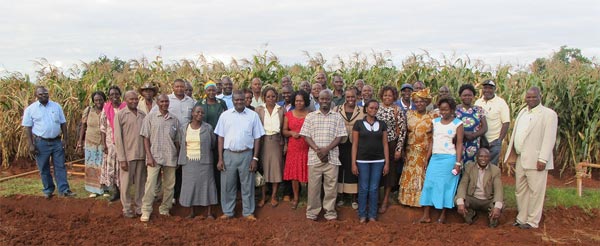
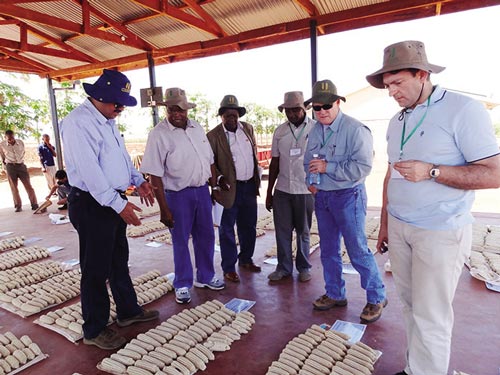 “One of the important ways to increase genetic gains and accelerate the development and deployment of improved varieties is to reduce the time needed for inbred development,” said B.M. Prasanna, CIMMYT’s Global Maize Program director. “The technology would also allow breeders to couple molecular marker-based selection for important traits such as disease resistance and quality at an early generation.” A project planning and review meeting held in Nairobi during 18-19 February 2013 was attended by representatives from national agriculture research systems, Kenya Seed Company, Seed Trade Association of Kenya, University of Hohenheim, the International Institute of Tropical Agriculture (
“One of the important ways to increase genetic gains and accelerate the development and deployment of improved varieties is to reduce the time needed for inbred development,” said B.M. Prasanna, CIMMYT’s Global Maize Program director. “The technology would also allow breeders to couple molecular marker-based selection for important traits such as disease resistance and quality at an early generation.” A project planning and review meeting held in Nairobi during 18-19 February 2013 was attended by representatives from national agriculture research systems, Kenya Seed Company, Seed Trade Association of Kenya, University of Hohenheim, the International Institute of Tropical Agriculture (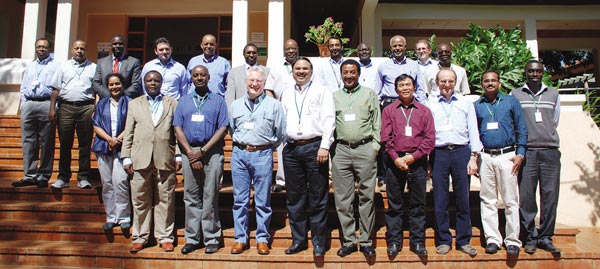
 A recently-emerged disease in Eastern Africa, maize lethal necrosis (
A recently-emerged disease in Eastern Africa, maize lethal necrosis (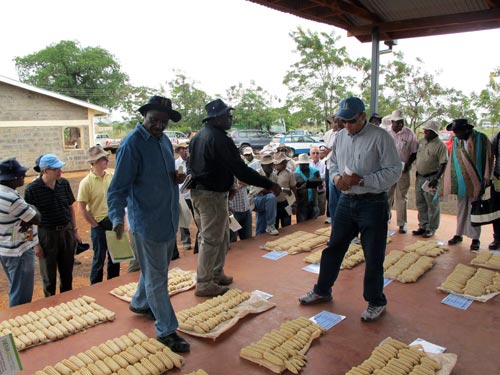 During 4-8 February 2013, stakeholders of the Water Efficient Maize for Africa (
During 4-8 February 2013, stakeholders of the Water Efficient Maize for Africa (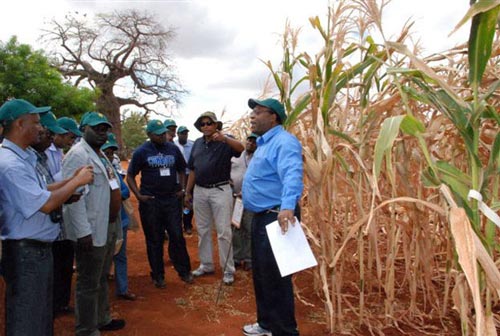 Thirty-six senior maize breeders from fifteen African countries participated in a course in Nairobi, Kenya, from 1 to 4 October 2012. The course attracted participants from national agricultural research systems, private seed companies, and universities collaborating within the Drought Tolerant Maize for Africa (
Thirty-six senior maize breeders from fifteen African countries participated in a course in Nairobi, Kenya, from 1 to 4 October 2012. The course attracted participants from national agricultural research systems, private seed companies, and universities collaborating within the Drought Tolerant Maize for Africa (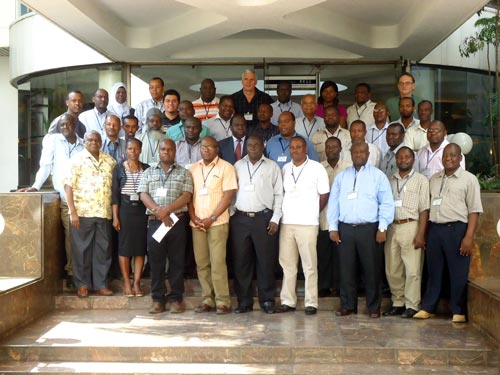
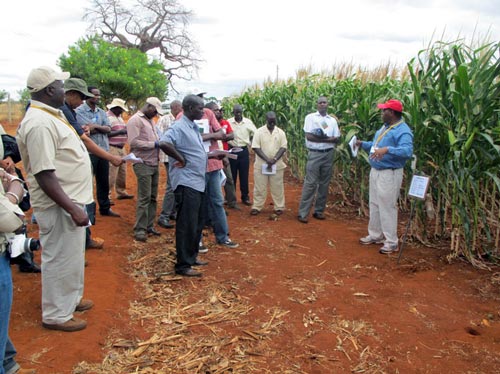 Twenty-nine drought-tolerant, early maturing, disease-resistant hybrids developed by the Water Efficient Maize for Africa (WEMA) project are getting ready to be released, a huge success for WEMA and all its stakeholders. “The 29 hybrids advanced to national performance trials is a record release by an entity in Africa in all times. These high performing hybrids yield 20–35 % more grain under moderate drought compared to 2008 commercially available hybrids,” said Stephen Mugo, CIMMYT principal scientist and co-chair of the WEMA Product Development Team. “Let us seize the technological opportunities that are there to boost productivity and people’s welfare,” he added. The white hybrids resistant to stem borers, maize weevils, and large grain borer, and to diseases such as grey leaf spot, northern leaf blight, and maize streak virus will complement other drought tolerant hybrids developed and released by the Drought Tolerant Maize for Africa (
Twenty-nine drought-tolerant, early maturing, disease-resistant hybrids developed by the Water Efficient Maize for Africa (WEMA) project are getting ready to be released, a huge success for WEMA and all its stakeholders. “The 29 hybrids advanced to national performance trials is a record release by an entity in Africa in all times. These high performing hybrids yield 20–35 % more grain under moderate drought compared to 2008 commercially available hybrids,” said Stephen Mugo, CIMMYT principal scientist and co-chair of the WEMA Product Development Team. “Let us seize the technological opportunities that are there to boost productivity and people’s welfare,” he added. The white hybrids resistant to stem borers, maize weevils, and large grain borer, and to diseases such as grey leaf spot, northern leaf blight, and maize streak virus will complement other drought tolerant hybrids developed and released by the Drought Tolerant Maize for Africa (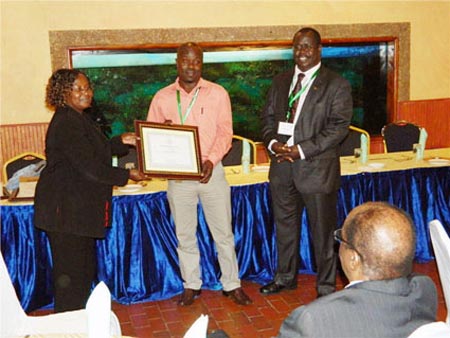 Murenga Mwimali, a PhD student in plant breeding at the University of Kwazulu Natal, South Africa, currently hosted at CIMMYT-Kenya, was awarded the best student poster at the first National Biosafety Conference in Nairobi, Kenya, during 6-9 August 2012. Mwimali represented the Insect Resistant Maize for Africa (IRMA) and
Murenga Mwimali, a PhD student in plant breeding at the University of Kwazulu Natal, South Africa, currently hosted at CIMMYT-Kenya, was awarded the best student poster at the first National Biosafety Conference in Nairobi, Kenya, during 6-9 August 2012. Mwimali represented the Insect Resistant Maize for Africa (IRMA) and 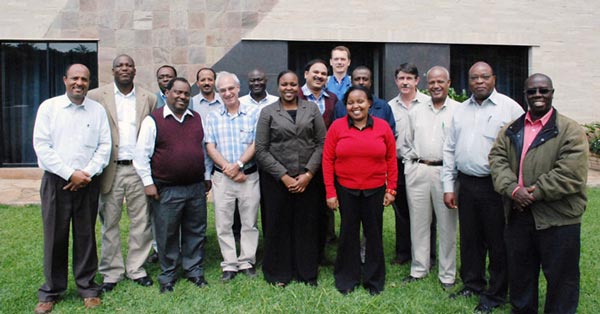
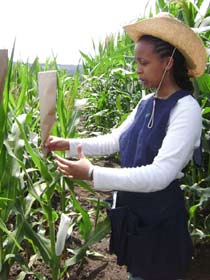 CIMMYT is adapting an advanced technology—the doubled haploid approach—to develop inbred lines of tropical maize for sub-Saharan Africa. It promises to reduce costs and speed the arrival of better-adapted maize for resource-poor farmers in the world’s toughest environments.
CIMMYT is adapting an advanced technology—the doubled haploid approach—to develop inbred lines of tropical maize for sub-Saharan Africa. It promises to reduce costs and speed the arrival of better-adapted maize for resource-poor farmers in the world’s toughest environments.